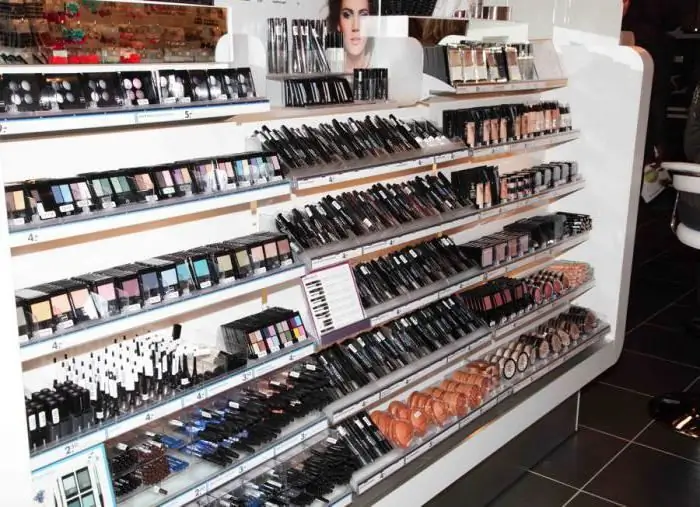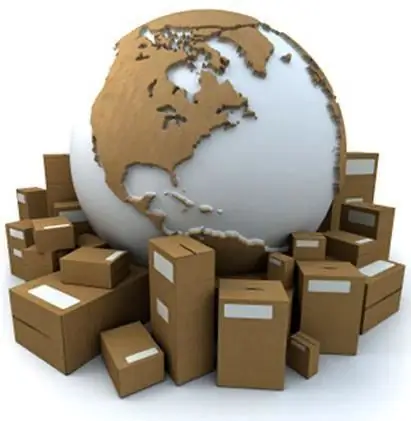2026 Author: Howard Calhoun | [email protected]. Last modified: 2025-01-24 13:10:29
For the registration of each mark of new products in business, the International Classification of Goods and Services is used. At the initial stage, the applicant determines under which category his activity falls. In the future, this will be the basis for the implementation of registration procedures and determining the amount of the fee paid by the entrepreneur. The category selection process itself has much in common with the All-Russian Classification of Economic Activities (OKVED) used in the Russian Federation when registering companies. However, there are also differences. One of the significant ones is that the International Classifier of Goods and Services covers a wider range of commercial activities. The entire list is divided into two sections. In the first part, the list of the Nice Classification includes categories from 1 to 34. The second section is shorter. This part, the classification of services, is numbered 35 to 45. Below are the applicable categories with their briefdescription.

1 category
1 class of the Nice Classification - these are all products of chemical production. These include, in particular:
- industrial, scientific, forestry, horticultural and agricultural products;
- all unprocessed synthetic resins and unprocessed plastic materials;
- various types of fertilizers;
- compounds used in fire extinguishing processes;
- compositions used for hardening and soldering metal objects;
- food preservation products;
- tannins;
- structures with adhesive properties.
2 category
The following substances belong to this class:
- various types of paints (linseed oil, varnishes);
- means used to protect metal from corrosion (wood from decay);
- substances with a coloring effect;
- natural resins, not processed;
- various types of metals (powder and sheet) used in art printing or used in decorative design.

3 category
The list of goods of the third class consists of:
- substances used in washing and bleaching;
- cleaning, polishing, degreasing preparations;
- various types of soap;
- perfumery products (cosmetics, lotions, oils);
- dentifrices (powders, paste).
Codes of the Nice Classification4-6
Substances belonging to the fourth category:
- fuels and lubricants (various fuels, oils, etc.);
- chemicals that absorb, bind dust compounds;
- lighting fixtures.
The fifth class includes substances used in the pharmaceutical and veterinary industries. This also includes hygiene items, types of special food (children's, dietary), types of food additives, dressings (bandages, plasters), materials used in dentistry, disinfectants and parasites, herbicides and fungicides. Class 6 includes metals, their alloys, as well as building materials made from them, movable structures, elements for laying rails. This category also includes wire and cables, staples and locks, pipes and other products from the specified raw materials that do not belong to other classes.

Classes of the Nice Classification from 7 to 12
The seventh category includes:
- machine tools, machines;
- engines, connecting elements and parts that provide transmissions (those used in ground vehicles are excluded);
- implements for agricultural purposes, except those operated by manual control;
- vending machines.
To the eighth class include tools and tools intended for manual use. The same category includes knives and their varieties, cutlery (spoons, forks), products recognized as cold weapons, razors. All are included in 9th grade.devices used in certain types of science and art. These include geodesy, cartography, photography, cinema, as well as optics and mechanics, kinematics and statics. Also under this category are cash registers, counting machines, computers and computers.

Categories 10 to 15
The tenth class includes devices used in various fields of modern medicine. This, in particular, surgery, dentistry, prosthetics, orthopedics. Also, the classification of the Nice Classification refers to the tenth category related materials (for example, threads for medical sutures). The 11th includes devices for heating, lighting, processing products using heat, cooling or generating steam, ventilation and drying, used in the distribution of water, sanitary equipment. The 12th class includes parts of ground vehicles: engines, transmission elements, various types of connections. Also included in this category are vehicles equipped with an air cushion. The 13th class defines firearms and pyrotechnics. To the 14th grade belong:
- precious metals and products from them;
- goods related to the jewelry industry, precious stones and bijouterie;
- watches, other types of chronometric devices.
Musical instruments pass through the 15th grade. These include, in particular, mechanical pianos with related devices, caskets. This includes musical instruments, electronic andelectric.
Categories 16 to 20
The list of classes of the Nice Classification of the sixteenth section includes stationery, paper and products made on its basis. To the 17th category belong:
- rubber, asbestos, rubber, gutta-percha, mica and various products from them, not included in other sections;
- products made from partially processed plastic;
- insulation materials;
- flexible pipes made from non-metal raw materials.
Leather and leather products, leatherette goods, saddlery products and accessories used in road conditions are included in class 18. According to the 19th section, construction materials that are not made of metal go through. In particular, these are rigid pipes, bitumen, resins and asph alt, mobile structures, monuments. Grade 20 includes furniture and its plastic components that do not belong to other classes.

Categories 21 to 28. Short Description
Class 21 includes:
- kitchen utensils, household utensils;
- household sponges;
- combs;
- all types of brushes except brushes;
- materials designed for brushes;
- cleaning products;
- metal washcloths;
- raw glass and some products from it, not related to other sections.
22 category includes: ropes and ropes, nets and tents, sheds and bags, tarpaulins and sails, stuffing materials (except rubber and plastic products), fibrous raw materials fromtextiles. Classes 23 and 24 of the Nice Classification include yarn and textile threads, products made from these materials, tablecloths, bedspreads and blankets. The 25th category includes clothes, various footwear, and also headdresses. The 26th class includes haberdashery and fringe products. The 27th class includes various floor coverings (linoleum, carpets, mats, mats, etc.), wall wallpapers and upholstery materials not made of textiles. The 28th section includes all kinds of toys, products intended for sports, Christmas tree decorations.

Categories 29 to 34. Summary
Classes 29 and 30 of the Nice Classification include food products of animal origin. This also includes vegetables that have undergone some preparation, ready for consumption or preservation processes. These categories also include plant food products that have undergone appropriate processing, suitable for consumption or canning. The same classes of the Nice Classification include food additives that improve the taste of products. Category 31 includes: unprocessed food products obtained as a result of the use of agriculture and economic activities in the forest zone, as well as animal feed. Class 32 includes: beer, soft drinks, including carbonated and mineral waters, fruit juices, compounds used for the manufacture of these products. Category 33 includes alcoholic products (except beer). Tobacco, matches, smoking accessories belong to the 34th class.

Categories 35 to 45
The following services are included in the 35th grade:
- based on assistance in the operation (carrying out activities) of an organization (industrial, commercial, trade);
- assistance in the management of the organization;
- advertising services.
The 36th category includes proposals in the field of financial activities, operations of the monetary structure. This also includes actions with real estate, insurance. The 37th class includes construction and repair services, installation of equipment. Category 38 is telecommunications services. The 39th class covers the activities of packing, moving and storing goods, as well as organizing travel. Class 40 includes material handling services. The 41st section includes activities for upbringing, conducting the educational process, organizing entertainment, cultural, leisure and sports events. Class 42 includes services in the field of science and technology. This section also includes various types of research and development, industrial analysis procedures. Software maintenance and improvement activities also fall into this category. Class 43 includes the types of services for the supply of food and drinks, as well as for the provision of temporary accommodation. The 44th section includes medical and veterinary activities, proposals in the field of cosmetology and hygiene, agriculture, gardening and forestry. Class 45 includes legal services. This section also includes proposals to ensure the safety of individuals andproperty, as well as a number of individual social services to meet the interests of consumers.
Recommended:
Category of goods and services: description, classification and types

The category of goods is the first thing every businessman must decide, because many do not even know how such a classification is carried out
Excisable goods are recognized List of excisable goods

Excises are a type of indirect taxes. They are levied on payers who produce and sell certain categories of products. Excises are included in the cost of goods and, accordingly, are passed on to the final consumer
Preparing goods for sale. Types and purpose of goods. Pre-sale preparation

Preparation of goods for sale includes a whole range of actions necessary for quick turnover and increase the profit of the outlet
How to find out the budget classification code? Budget classification codes for taxes

The problem of how to find out the budget classification code arises in front of almost every taxpayer when the deadline for paying taxes comes. No one can avoid it: neither the accountant of the organization responsible for the relevant transfers to the tax office, nor ordinary citizens who own housing, land, a car or a simple outboard motor
VAT 10 percent: list of goods and services

If your product was not on our list, and you have a question: "VAT 10% in what cases (or rather, to what goods and services) does it apply?", you need to look at the Resolution. We have already indicated the number and date. It has a complete list. As a rule, these are all socially significant groups of goods that are in high demand among citizens

